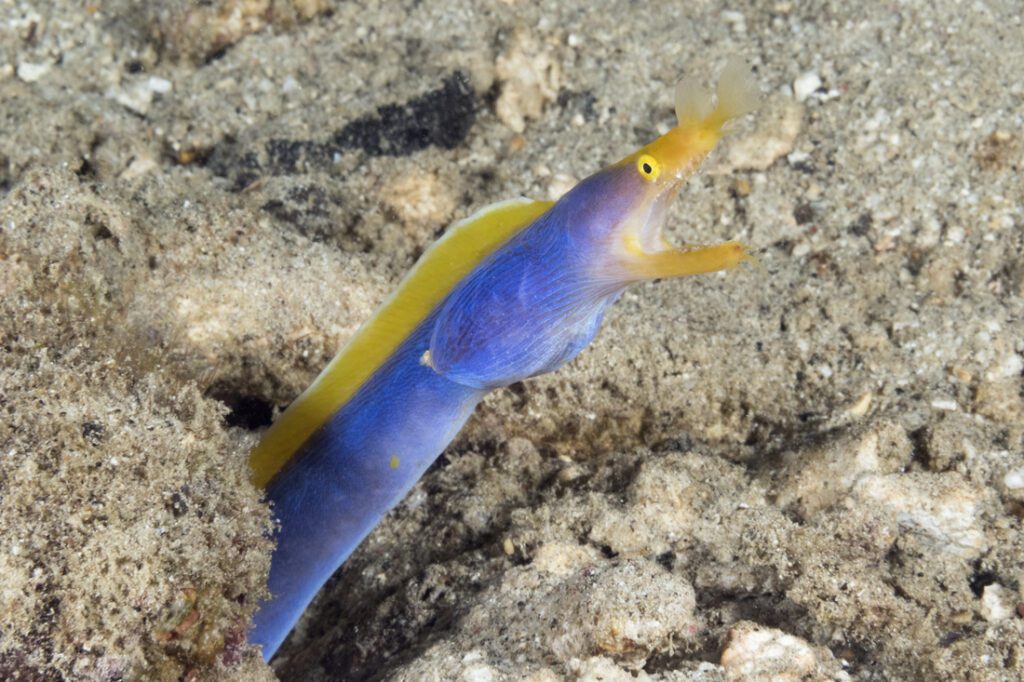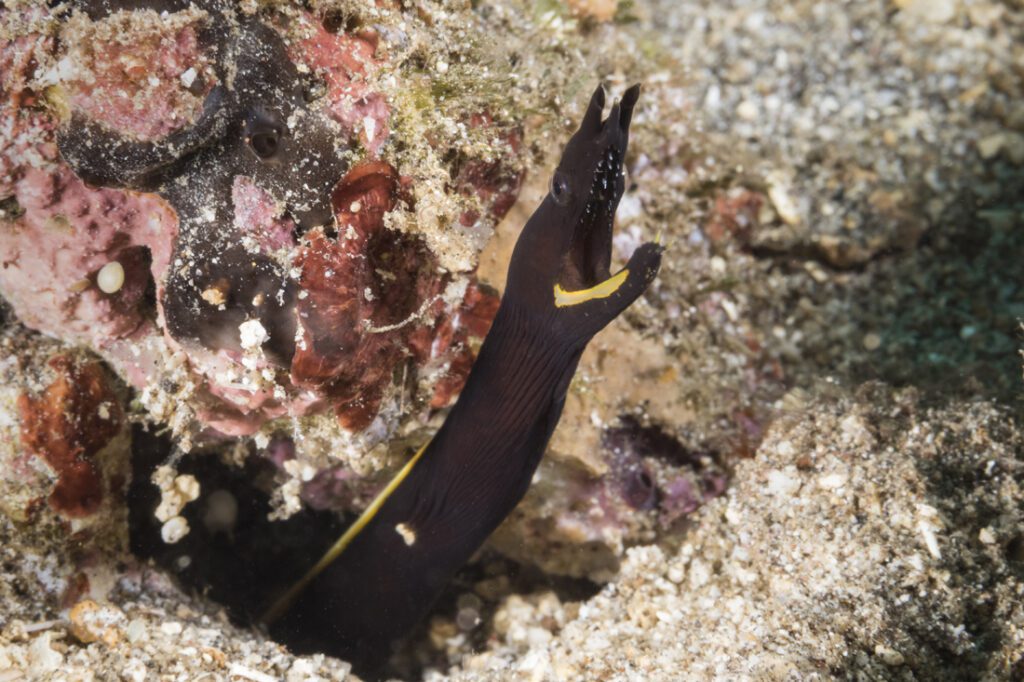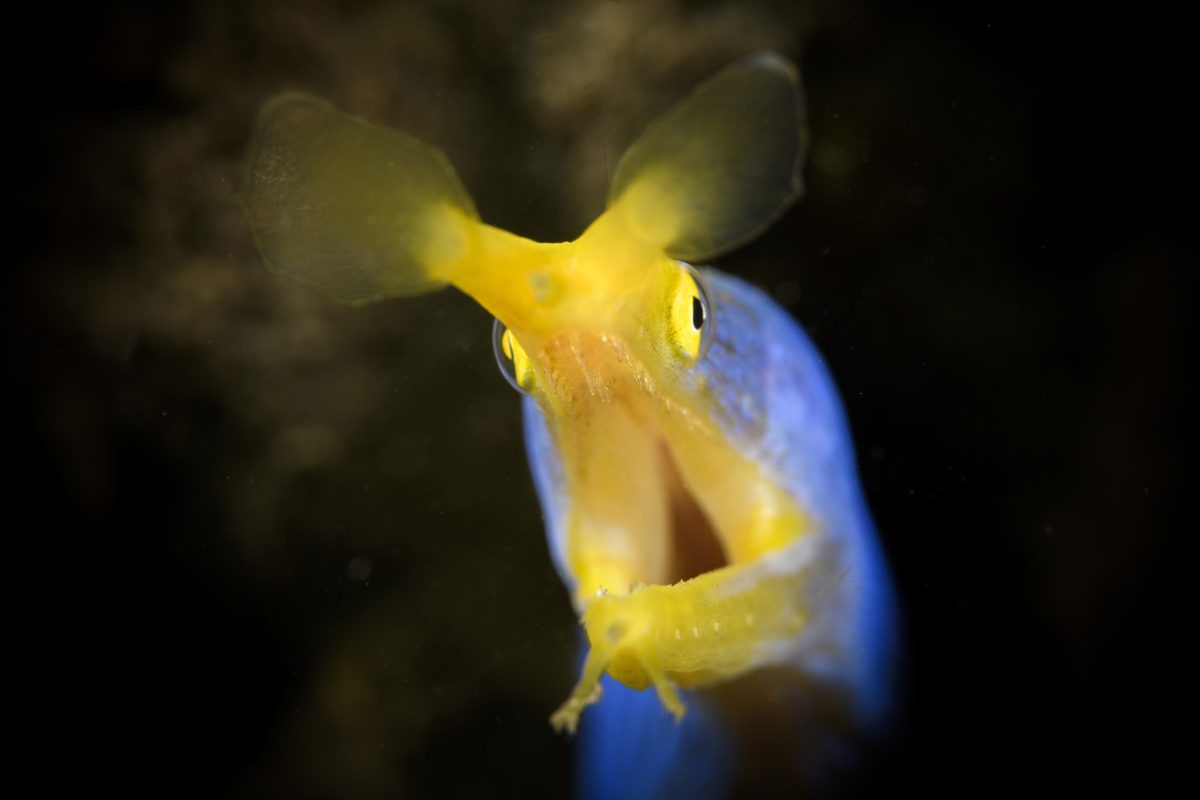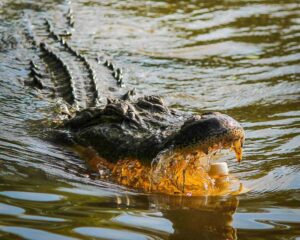Recognizable by their long, thin body, high dorsal fins and expanded anterior nostrils ribbon eels (Rhinomuraena quaesita) bare an uncanny similarity to a mythical Chinese dragons.
Divers who take a closer look on the reefs around Wakatobi Dive Resort might just run into what looks like a diminutive undersea dragon with jaws agape. In fact, they've found a ribbon eel. These skinny members of the moray family begin life as jet-black males, then turn a bright blue as they mature. Finding a ribbon eel in its terminal yellow phase is relatively rare, as this is a sign that they have made their final transition to a female.
These colorful “sea dragons” are just one of many unique creatures that can be found on the protected reefs surrounding Wakatobi Dive Resort and the regions visited by the resort’s dive liveaboard Pelagian.

The ribbon eels (Rhinomuraena quaesita) are recognizable by their long, thin body, high dorsal fins and expanded anterior nostrils bare an uncanny similarity to a mythical Chinese dragon.
Based on observed colour changes from juvenile to adult, ribbon eels are strongly believed to be protandric hermaphrodites, although this has yet to be confirmed as colour changes related to sex change is not known from any other species of moray eels.

What is certain, juveniles set out jet black in colour with a pronounced yellow margin in their dorsal fin till they begin to their subadult phase.
You can read more about other species of eels on Wakatobi’s blog Wakatobi Flow by going here.








